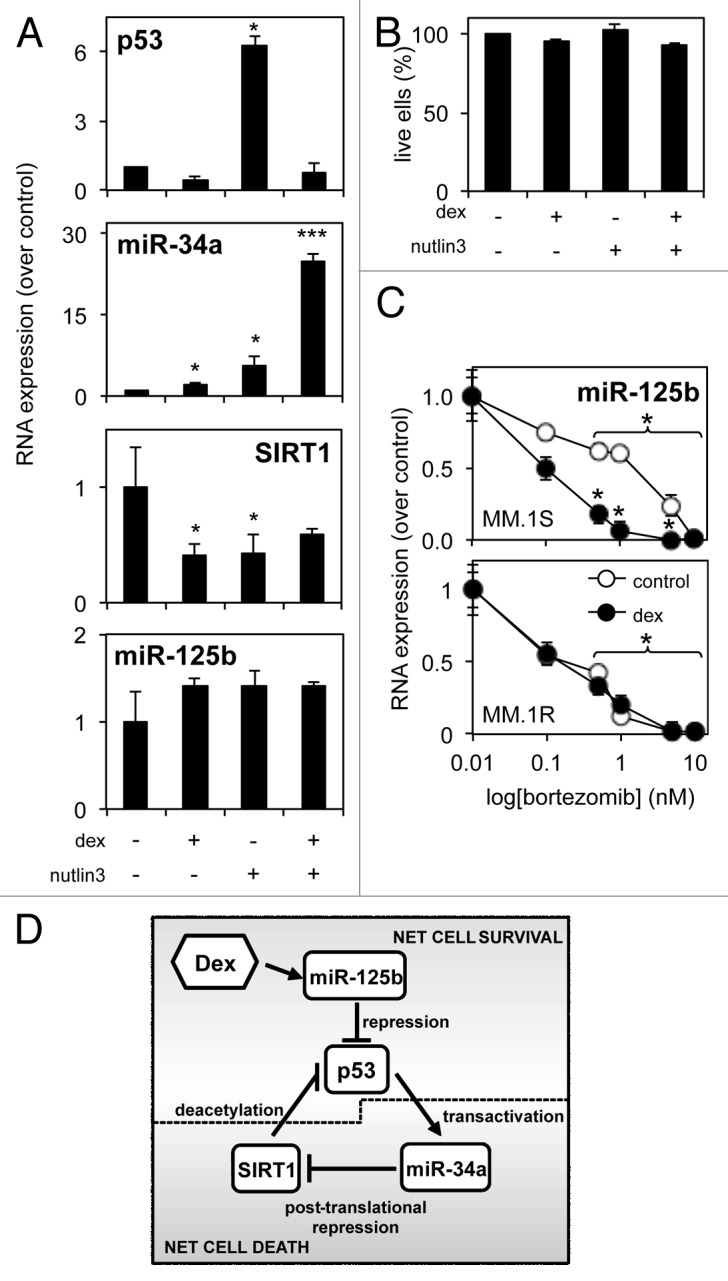
Figure 7. A potential role for miR-125b in the p53/miR-34a/SIRT1 signaling network in MM. (A) qRT-PCR reveals regulation of the p53/miR-34a/SIRT1 signaling network following direct p53 stabilization and activation by 16 h nutlin3 pre-treatment before a further 24 h exposure to dexamethasone. (B) Luminescent cell death analysis reveals nutlin3 pre-treatment to have no effect of on dexamethasone-induced cytotoxic responses. (C) qRT-PCR reveals the effect of bortezomib treatment on miR-125b levels in MM.1S cells is dose-dependent, and can be significantly enhanced by addition of dexamethasone, compared with MM.1R cells. (D) Proposed scheme of how the p53/miR-34a/SIRT1 signaling network is regulated by dexamethasone in MM and intervention of miR-125b. Several solid tumors and hematological malignancies, display a balance between net cell survival and net cell death.13,14 Tumor suppressor p53 transcription factor transactivates pro-apoptotic miR-34a, that in turn targets numerous 3′ UTR sites of pro-survival histone deacetylase SIRT1. Active SIRT1 deacetylates p53’s C terminus to prevent its transcriptional activity. Dexamethasone represses numerous pro-survival proteins; however, MM cells exposed to dexamethasone demonstrate only low levels of cell death. Dexamethasone induced expression of oncogenic miR-125b triggers net cell survival in MM cells by targeting p53. We show here that repression of miR-125b activity with synthetic anti-miRs enhances p53 expression, shifting the balance back toward net cell death.
